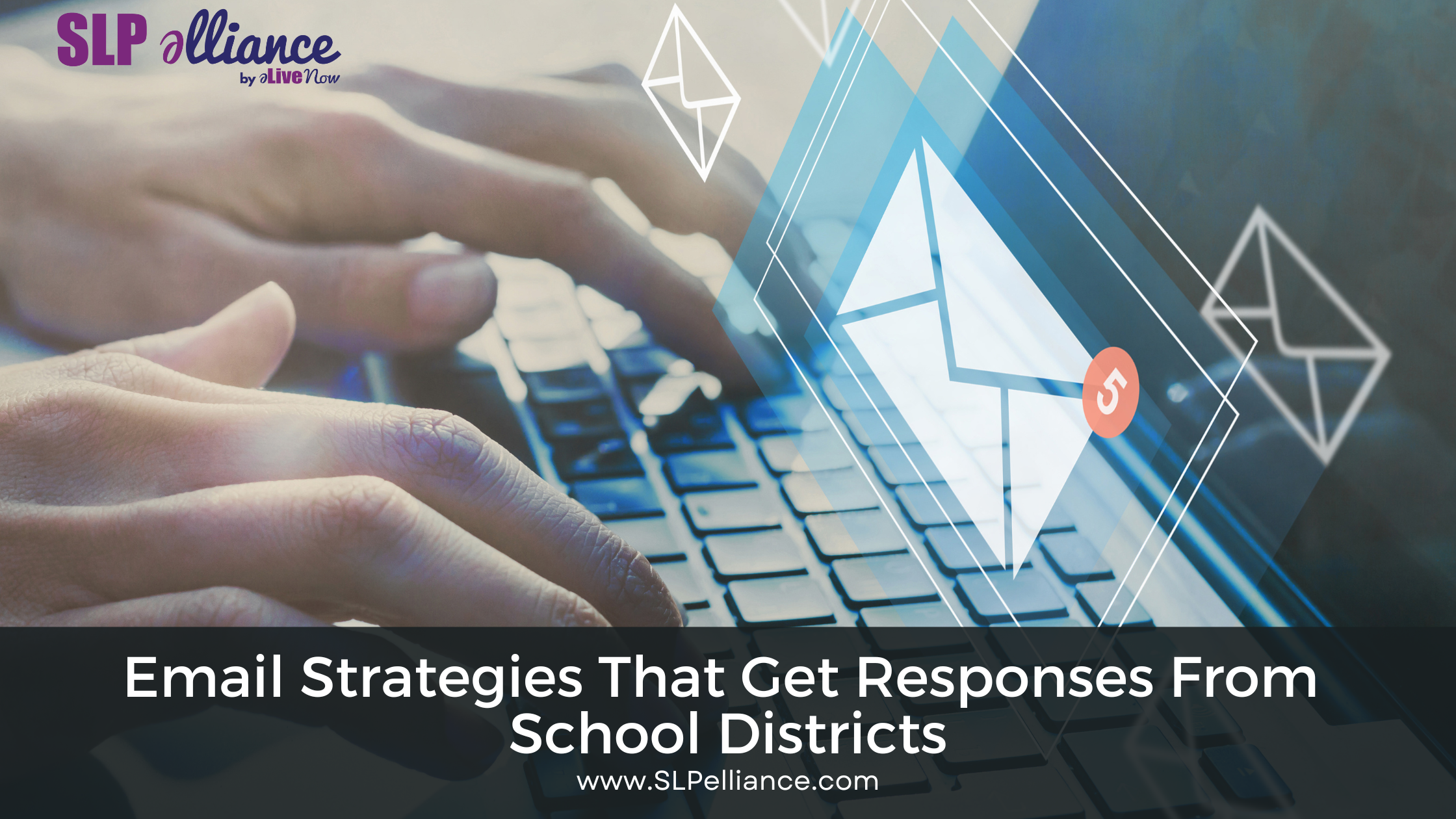Over the past couple of years, I have sent hundreds (or thousands) of emails to school districts to see if they are in need of SLP’s. I happen to be virtual, so when most districts see the word “teletherapy” in an email they are not likely to respond with a quick “Yes”. Because of that, I have had to tweak and edit my emails along the way based on verbiage that actually elicits responses.
Here’s what I discovered: even a “We’re fully staffed” or “We don’t use virtual therapists” is a win. Why? Because it’s a response. It means the district respects me enough to respond rather than think I’m just another agency looking to price gouge a district.
If you’re reaching out to schools yourself, here are my Top 5 Do’s and Don’ts when it comes to crafting those initial emails.
DO…
- Be relatable
- Use phrases you’d actually say aloud (leave out jargon)
- Keep it simple.
- 8 to 10 sentences max. You want to give just enough to spark interest—not overwhelm.
- Offer testimonials or references.
- Reach out to people you’ve worked with (other professionals and parents) for comments.
- Clearly state how you can help.
- Mention the specific ways you’re able to support their team or caseload.
- Share your state licence number.
- This adds credibility and shows you’re transparent and legitimate.
DON’T…
- Write too much.
- You don’t have to provide your entire bio in the initial email. Try to condense the highlights within 1-2 sentences.
- Use marketing phrases.
- This will make you sound like an agency, which can be a huge turn off.
- Say things to sound inflexible.
- This could cause districts to eliminate you as a choice from the beginning; be open to hearing what they need.
- Send before proof reading.
- Spelling and grammar errors make you seem less professional. Always double-check.
- End the email without including potential next steps.
- Include a clear call to action- including how they can reach you or offer your calendar link.
In short, perfecting your email marketing plan takes time. For example, I sent the same virtual charter school a different variation of an email throughout the school year. The version that finally landed me a contract was the most personable one. So don’t get discouraged. Think of every message as a chance to learn what works and what doesn’t. With each revision, you get closer to a “yes.”
👉 Need help getting your first school contract?
We’ve got you covered. Check out our on-demand School Contracting course, designed specifically to walk you through the process step by step.






